- Home
- George Orwell
Decline of the English Murder Page 2
Decline of the English Murder Read online
Page 2
I had no idea how long I was going to be incarcerated, & supposed that it would be several days at least. However, between four and five o'clock they took me out of the cell, gave back the things which had been confiscated, and shot me into the street forthwith. Evidently the day in custody served instead of the fine. I had only twopence and had had nothing to eat all day except bread and marg., and was damnably hungry; however, as always happens when it is a choice between tobacco and food, I bought tobacco with my twopence. Then I went down to the Church Army shelter in the Waterloo Road, where you get a kip, two meals of bread and corned beef and tea and a prayer meeting, for four hours work at sawing wood.
The next morning I went home, got some money, and went out to Edmonton. I turned up at the Casual Ward about nine at night, not downright drunk but more or less under the influence, thinking this would lead to prison - for it is an offence under the Vagrancy Act for a tramp to come drunk to the Casual Ward. The porter, however, treated me with great consideration, evidently feeling that a tramp with money enough to buy drink ought to be respected. During the next few days I made several more attempts to get into trouble by begging under the noses of the police, but I seemed to bear a charmed life - no one took any notice of me. So, as I did not want to do anything serious which might lead to investigations about my identity etc., I gave it up. The trip, therefore, was more or less of a failure, but I have recorded it as a fairly interesting experience.
Decline of the English Murder
It is Sunday afternoon, preferably before the war. The wife is already asleep in the armchair, and the children have been sent out for a nice long walk. You put your feet up on the sofa, settle your spectacles on your nose, and open the News of the World. Roast beef and Yorkshire, or roast pork and apple sauce, followed up by suet pudding and driven home, as it were, by a cup of mahogany-brown tea, have put you in just the right mood. Your pipe is drawing sweetly, the sofa cushions are soft underneath you, the fire is well alight, the air is warm and stagnant. In these blissful circumstances, what is it that you want to read about?
Naturally, about a murder. But what kind of murder? If one examines the murders which have given the greatest amount of pleasure to the British public, the murders whose story is known in its general outline to almost everyone and which have been made into novels and rehashed over and over again by the Sunday papers, one finds a fairly strong family resemblance running through the greater number of them. Our great period in murder, our Elizabethan period, so to speak, seems to have been between roughly 1850 and 1925; and the murderers whose reputation has stood the test of time are the following: Dr Palmer of Rugeley, Jack the Ripper, Neill Cream, Mrs Maybrick, Dr Crippen, Seddon, Joseph Smith, Armstrong, and Bywaters and Thompson. In addition, in 1919 or thereabouts, there was another very celebrated case which fits into the general pattern but which I had better not mention by name, because the accused man was acquitted.
Of the above-mentioned nine cases, at least four have had successful novels based on them, one has been made into a popular melodrama, and the amount of literature surrounding them, in the form of newspaper write-ups, criminological treatises and reminiscences by lawyers and police officers, would make a considerable library. It is difficult to believe that any recent English crime will be remembered so long and so intimately, and not only because the violence of external events has made murder seem unimportant, but because the prevalent type of crime seems to be changing. The principal cause celebre of the war years was the so-called Cleft Chin Murder, which has now been written up in a popular booklet; the verbatim account of the trial was published some time last year by Messrs Jarrolds with an introduction by Mr Bechhofer-Roberts. Before returning to this pitiful and sordid case, which is only interesting from a sociological and perhaps a legal point of view, let me try to define what it is that the readers of Sunday papers mean when they say fretfully that 'you never seem to get a good murder nowadays'.
In considering the nine murders I named above, one can start by excluding the Jack the Ripper case, which is in a class by itself. Of the other eight, six were poisoning cases, and eight of the ten criminals belonged to the middle class. In one way or another, sex was a powerful motive in all but two cases, and in at least four cases respectability - the desire to gain a secure position in life, or not to forfeit one's social position by some scandal such as a divorce - was one of the main reasons for committing murder. In more than half the cases, the object was to get hold of a certain known sum of money such as a legacy or an insurance policy, but the amount involved was nearly always small. In most of the cases the crime only came to light slowly, as the result of careful investigation which started off with the suspicions of neighbours or relatives; and in nearly every case there was some dramatic coincidence, in which the finger of Providence could be clearly seen, or one of those episodes that no novelist would dare to make up, such as Crippen's flight across the Atlantic with his mistress dressed as a boy, or Joseph Smith playing 'Nearer, my God, to Thee' on the harmonium while one of his wives was drowning in the next room. The background of all these crimes, except Neill Cream's, was essentially domestic; of twelve victims, seven were either wife or husband of the murderer.
With all this in mind one can construct what would be, from a News of the World reader's point of view, the 'perfect' murder. The murderer should be a little man of the professional class - a dentist or a solicitor, say - living an intensely respectable life somewhere in the suburbs, and preferably in a semi-detached house, which will allow the neighbours to hear suspicious sounds through the wall. He should be either chairman of the local Conservative Party branch, or a leading Nonconformist and strong Temperance advocate. He should go astray through cherishing a guilty passion for his secretary or the wife of a rival professional man, and should only bring himself to the point of murder after long and terrible wrestles with his conscience. Having decided on murder, he should plan it all with the utmost cunning, and only slip up over some tiny, unforeseeable detail. The means chosen should, of course, be poison. In the last analysis he should commit murder because this seems to him less disgraceful, and less damaging to his career, than being detected in adultery. With this kind of background, a crime can have dramatic and even tragic qualities which make it memorable and excite pity for both victim and murderer. Most of the crimes mentioned above have a touch of this atmosphere, and in three cases, including the one I referred to but did not name, the story approximates to the one I have outlined.
Now compare the Cleft Chin Murder. There is no depth of feeling in it. It was almost chance that the two people concerned committed that particular murder, and it was only by good luck that they did not commit several others. The background was not domesticity, but the anonymous life of the dance halls and the false values of the American film. The two culprits were an eighteen-year-old ex-waitress named Elizabeth Jones, and an American army deserter, posing as an officer, named Karl Hulten. They were only together for six days, and it seems doubtful whether, until they were arrested, they even learned one another's true names. They met casually in a teashop, and that night went out for a ride in a stolen army truck. Jones described herself as a strip-tease artist, which was not strictly true (she had given one unsuccessful performance in this line), and declared that she wanted to do something dangerous, 'like being a gun-moll'. Hulten described himself as a big-time Chicago gangster, which was also untrue. They met a girl bicycling along the road, and to show how tough he was Hulten ran over her with his truck, after which the pair robbed her of the few shillings that were on her. On another occasion they knocked out a girl to whom they had offered a lift, took her coat and handbag and threw her into a river. Finally, in the most wanton way, they murdered a taxi-driver who happened to have PS8 in his pocket. Soon afterwards they parted. Hulten was caught because he had foolishly kept the dead man's car, and Jones made spontaneous confessions to the police. In court each prisoner incriminated the other. In between crimes, both of them seem to have beh
aved with the utmost callousness: they spent the dead taxi-driver's PS8 at the dog races.
Judging from her letters, the girl's case has a certain amount of psychological interest, but this murder probably captured the headlines because it provided distraction amid the doodle-bugs and the anxieties of the Battle of France. Jones and Hulten committed their murder to the tune of V1, and were convicted to the tune of V2. There was also considerable excitement because - as has become usual in England - the man was sentenced to death and the girl to imprisonment.
According to Mr Raymond, the reprieving of Jones caused widespread indignation and streams of telegrams to the Home Secretary: in her native town, 'She should hang' was chalked on the walls beside pictures of a figure dangling from a gallows. Considering that only ten women have been hanged in Britain in this century, and that the practice has gone out largely because of popular feeling against it, it is difficult not to feel that this clamour to hang an eighteen-year-old girl was due partly to the brutalizing effects of war. Indeed, the whole meaningless story, with its atmosphere of dance-halls, movie palaces, cheap perfume, false names and stolen cars, belongs essentially to a war period.
Perhaps it is significant that the most talked-of English murder of recent years should have been committed by an American and an English girl who had become partly americanized. But it is difficult to believe that this case will be so long remembered as the old domestic poisoning dramas, product of a stable society where the all-prevailing hypocrisy did at least ensure that crimes as serious as murder should have strong emotions behind them
Just Junk - But Who Could Resist It?
Which is the most attractive junk shop in London is a matter of taste, or for debate: but I could lead you to some first-rate ones in the dingier areas of Greenwich, in Islington near the Angel, in Holloway, in Paddington, and in the hinterland of the Edgware Road. Except for a couple near Lord's - and even those are in a section of street that happens to have fallen into decay - I have never seen a junk shop worth a second glance in what is called a 'good' neighbourhood.
A junk shop is not to be confused with an antique shop. An antique shop is clean, its goods are attractively set out and priced at about double their value and once inside the shop you are usually bullied into buying something.
A junk shop has a fine film of dust over the window, its stock may include literally anything that is not perishable, and its proprietor, who is usually asleep in a small room at the back, displays no eagerness to make a sale.
Also, its finest treasures are never discoverable at first glimpse; they have to be sorted out from among a medley of bamboo cake-stands, Britannia-ware dish-covers, turnip watches, dog-eared books, ostrich eggs, typewriters of extinct makes, spectacles without lenses, decanters without stoppers, stuffed birds, wire fire guards, bunches of keys, boxes of nuts and bolts, conch shells from the Indian Ocean, boot trees, Chinese ginger jars and pictures of Highland cattle.
Some of the things to look out for in the junk shop are Victorian brooches and lockets of agate or other semi-precious stones.
Perhaps five out of six of these things are hideously ugly, but there are also very beautiful objects among them. They are set in silver, or more often in pinchbeck, a charming alloy which for some reason is no longer made.
Other things worth looking for are papier-mache snuffboxes with pictures painted on the lid, lustre-ware jugs, muzzle-loading pistols made round about 1830 and ships in bottles. These are still made, but the old ones are always the best, because of the elegant shape of the Victorian bottles and the delicate green of the glass.
Or, again, musical boxes, horse brasses, copper powder-horns, Jubilee mugs (for some reason the 1887 Jubilee produced much pleasanter keep-sakes than the Diamond Jubilee ten years later) and glass paper-weights with pictures at the bottom.
There are others that have a piece of coral enclosed in the glass, but these are always fantastically expensive. Or you may come across a scrap book full of Victorian fashion-plates and pressed flowers or even, if you are exceptionally lucky, the scrap book's big brother, a scrap screen.
Scrap screens - all too rare nowadays - are simply ordinary wooden or canvas screens with coloured scraps cut out and pasted all over them in such a way as to make more or less coherent pictures. The best were made round about 1880, but if you buy one at a junk shop it is sure to be defective, and the great charm of owning such a screen lies in patching it up yourself.
You can use coloured reproductions from art magazines, Christmas cards, postcards, advertisements, book jackets, even cigarette cards. There is always room for one more scrap, and with careful placing anything can be made to look congruous.
Thus, merely in one corner of my own scrap screen, Cezanne's card-players with a black bottle between them are impinging on a street scene in medieval Florence, while on the other side of the street one of Gauguin's South Sea islanders is sitting beside an English lake where a lady in leg-of-mutton sleeves is paddling a canoe. They all look perfectly at home together.
All these things are curiosities, but one does find useful things in the junk shop as well.
In a shop in Kentish Town, since blitzed, I once bought an old French sword-bayonet, price sixpence, which did four years' service as a fire-poker. And during the last few years the junk shop has been the only place where you could buy certain carpentering tools - a jack plane for instance - or such useful objects as corkscrews, clock keys, skates, wine glasses, copper saucepans and spare pram wheels.
In some shops you can find keys to fit almost any lock, others specialize in pictures and are therefore useful when you need a frame. Indeed, I have often found that the cheapest way of buying a frame is to buy a picture and then throw away the picture.
But the attraction of the junk shop does not lie solely in the bargains you pick up, nor even in the aesthetic value which - at a generous estimate - 5 per cent of its contents may possess. Its appeal is to the jackdaw inside all of us, the instinct that makes a child hoard copper nails, clock springs and the glass marbles out of lemonade bottles. To get pleasure out of a junk shop you are not obliged to buy anything, nor even to want to buy anything.
I know a shop in Tottenham Court road where I have never, over a period of many years, seen anything that was not offensively ugly and another, not far from Baker-street, where there is nearly always something tempting. The first appeals to me almost as strongly as the second.
Another shop, in the Chalk Farm area, sells nothing but rubbishy fragments of old metal. For as long as I can remember the same worn-out tools and lengths of lead piping have been lying in the trays, the same gas stoves have been mouldering in the doorway. I have never bought anything there, never even seen anything that I contemplated buying. Yet it would be all but impossible for me to pass that way without crossing the street to have a good look.
Good Bad Books
Not long ago a publisher commissioned me to write an introduction for a reprint of a novel by Leonard Merrick. This publishing house, it appears, is going to reissue a long series of minor and partly forgotten novels of the twentieth century. It is a valuable service in these bookless days, and I rather envy the person whose job it will be to scout round the threepenny boxes, hunting down copies of his boyhood favourites.
A type of book which we hardly seem to produce in these days, but which flowered with great richness in the late nineteenth and early twentieth centuries, is what Chesterton called the 'good bad book': that is, the kind of book that has no literary pretensions but which remains readable when more serious productions have perished. Obviously outstanding books in this line are Raffles and the Sherlock Holmes stories, which have kept their place when innumerable 'problem novels', 'human documents' and 'terrible indictments' of this or that have fallen into deserved oblivion. (Who has worn better, Conan Doyle or Meredith?) Almost in the same class as these I put R. Austin Freeman's earlier stories - 'The Singing Bone', 'The Eye of Osiris' and others - Ernest Bramah's Max Carrados, and, dropp
ing the standard a bit, Guy Boothby's Tibetan thriller, Dr Nikola, a sort of schoolboy version of Huc's Travels in Tartary which would probably make a real visit to Central Asia seem a dismal anticlimax.
But apart from thrillers, there were the minor humorous writers of the period. For example, Pett Ridge - but I admit his full-length books no longer seem readable - E. Nesbit (The Treasure Seekers), George Birmingham, who was good so long as he kept off politics, the pornographic Binstead ('Pitcher' of the Pink 'Un), and, if American books can be included, Booth Tarkington's Penrod stories. A cut above most of these was Barry Pain. Some of Pain's humorous writings are, I suppose, still in print, but to anyone who comes across it I recommend what must now be a very rare book - The Octave of Claudius, a brilliant exercise in the macabre. Somewhat later in time there was Peter Blundell, who wrote in the W. W. Jacobs vein about Far Eastern seaport towns, and who seems to be rather unaccountably forgotten, in spite of having been praised in print by H. G. Wells.
However, all the books I have been speaking of are frankly 'escape' literature. They form pleasant patches in one's memory, quiet corners where the mind can browse at odd moments, but they hardly pretend to have anything to do with real life. There is another kind of good bad book which is more seriously intended, and which tells us, I think, something about the nature of the novel and the reasons for its present decadence. During the last fifty years there has been a whole series of writers - some of them are still writing - whom it is quite impossible to call 'good' by any strictly literary standard, but who are natural novelists and who seem to attain sincerity partly because they are not inhibited by good taste. In this class I put Leonard Merrick himself, W. L. George, J. D. Beresford, Ernest Raymond, May Sinclair, and - at a lower level than the others but still essentially similar - A. S. M. Hutchinson.

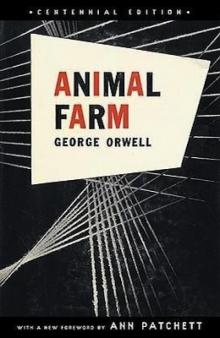 Animal Farm & 1984
Animal Farm & 1984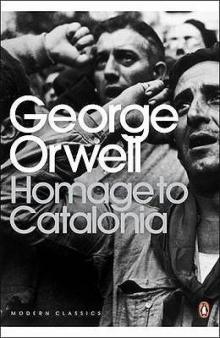 Homage to Catalonia
Homage to Catalonia Decline of the English Murder
Decline of the English Murder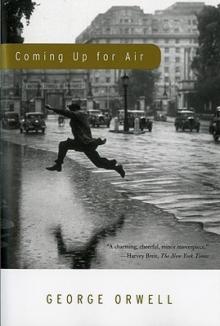 Coming Up for Air
Coming Up for Air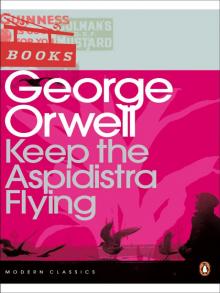 Keep the Aspidistra Flying
Keep the Aspidistra Flying Facing Unpleasant Facts: Narrative Essays
Facing Unpleasant Facts: Narrative Essays The Complete Novels of George Orwell
The Complete Novels of George Orwell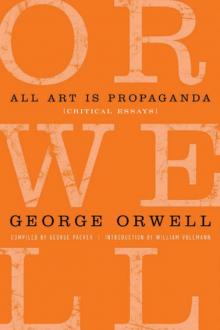 All Art Is Propaganda: Critical Essays
All Art Is Propaganda: Critical Essays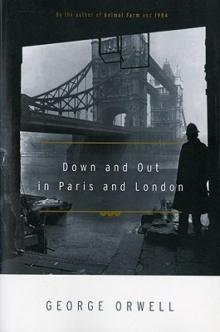 Down and Out in Paris and London
Down and Out in Paris and London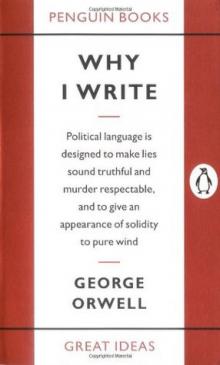 Why I Write
Why I Write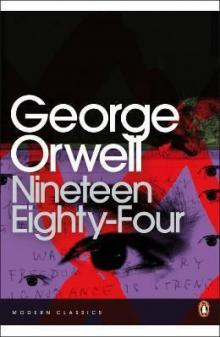 Nineteen Eighty-Four
Nineteen Eighty-Four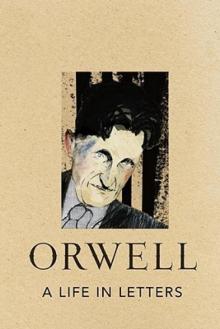 A Life in Letters
A Life in Letters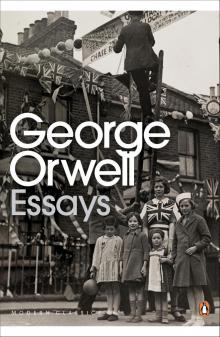 Essays
Essays A Clergyman's Daughter
A Clergyman's Daughter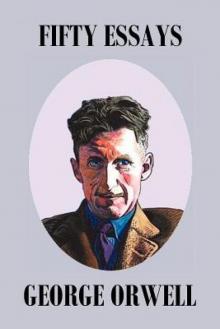 Fifty Orwell Essays
Fifty Orwell Essays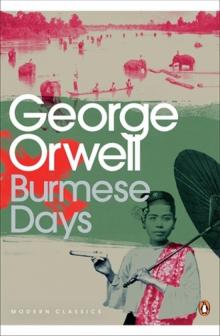 Burmese Days
Burmese Days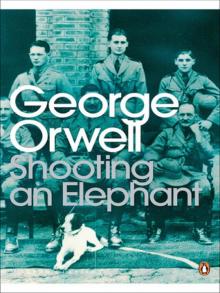 Shooting an Elephant
Shooting an Elephant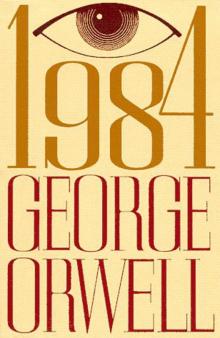 1984 (Penguin)
1984 (Penguin)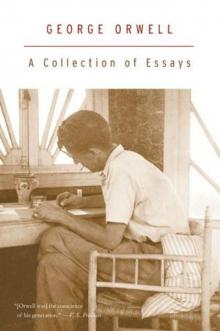 A Collection of Essays
A Collection of Essays 1984
1984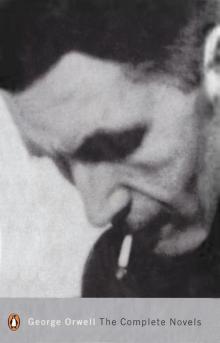 The Complete Novels
The Complete Novels All Art Is Propaganda
All Art Is Propaganda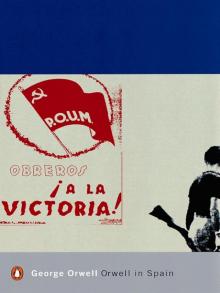 Orwell in Spain
Orwell in Spain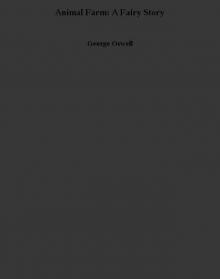 Animal Farm: A Fairy Story
Animal Farm: A Fairy Story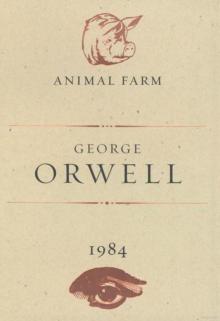 Animal Farm and 1984
Animal Farm and 1984